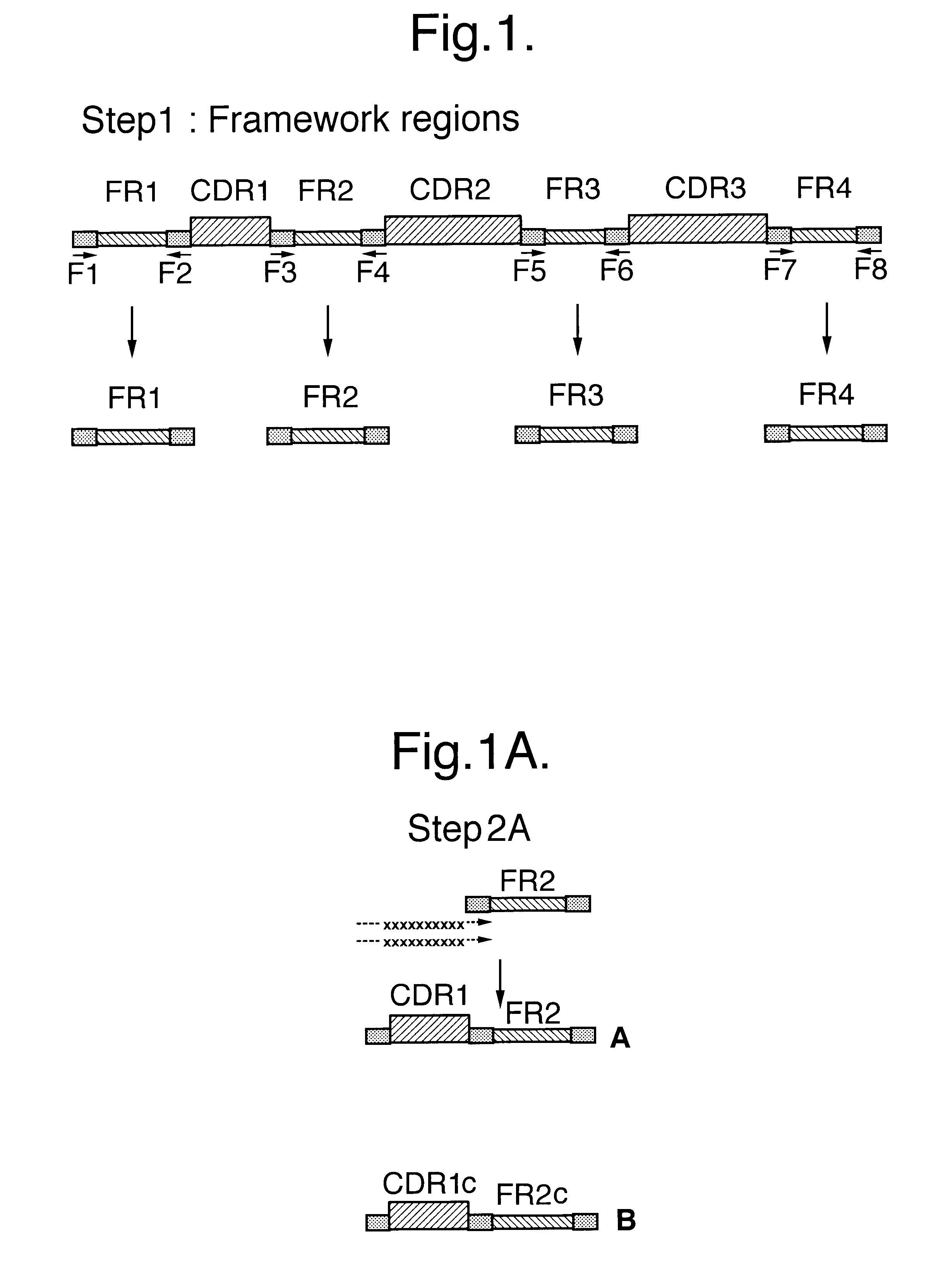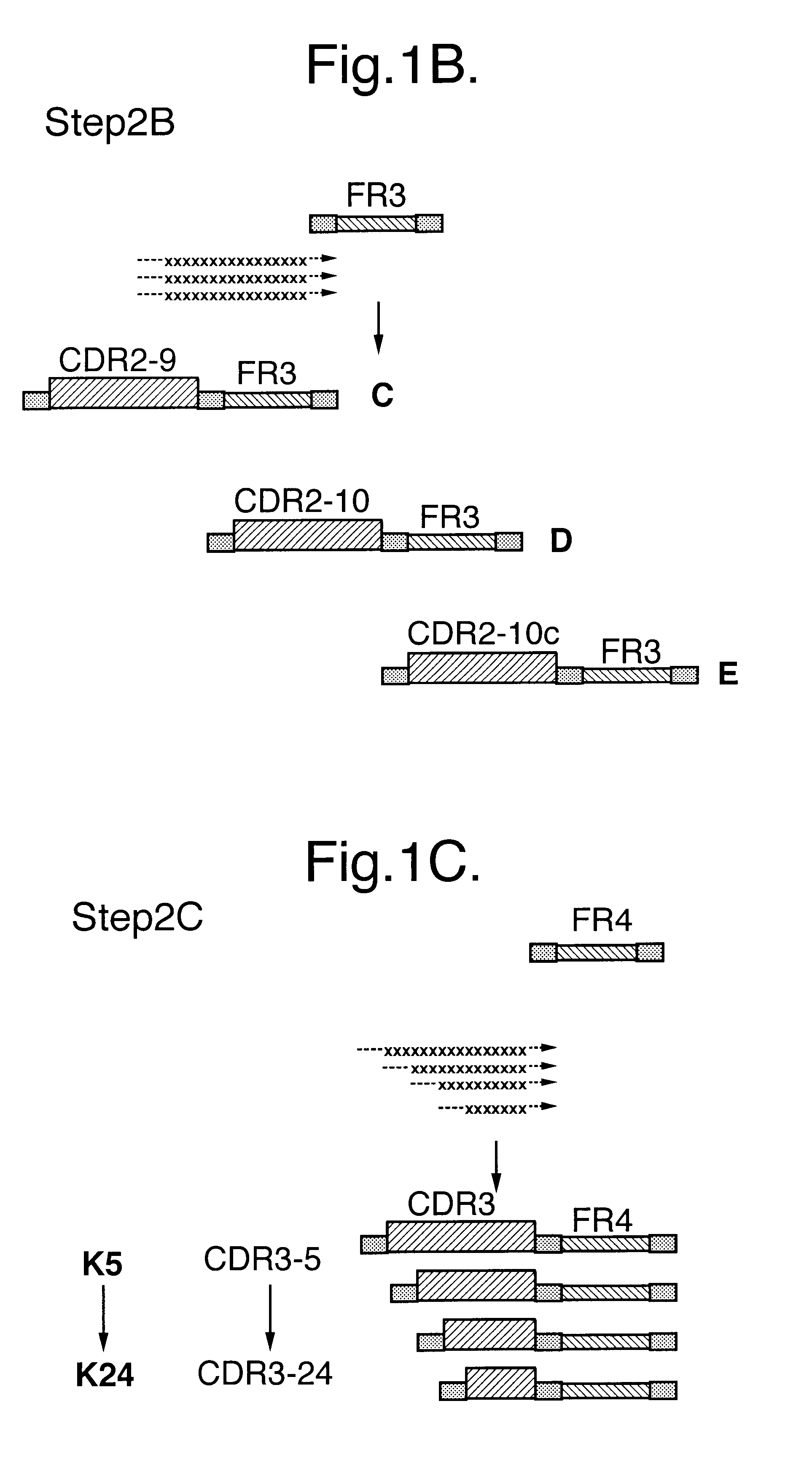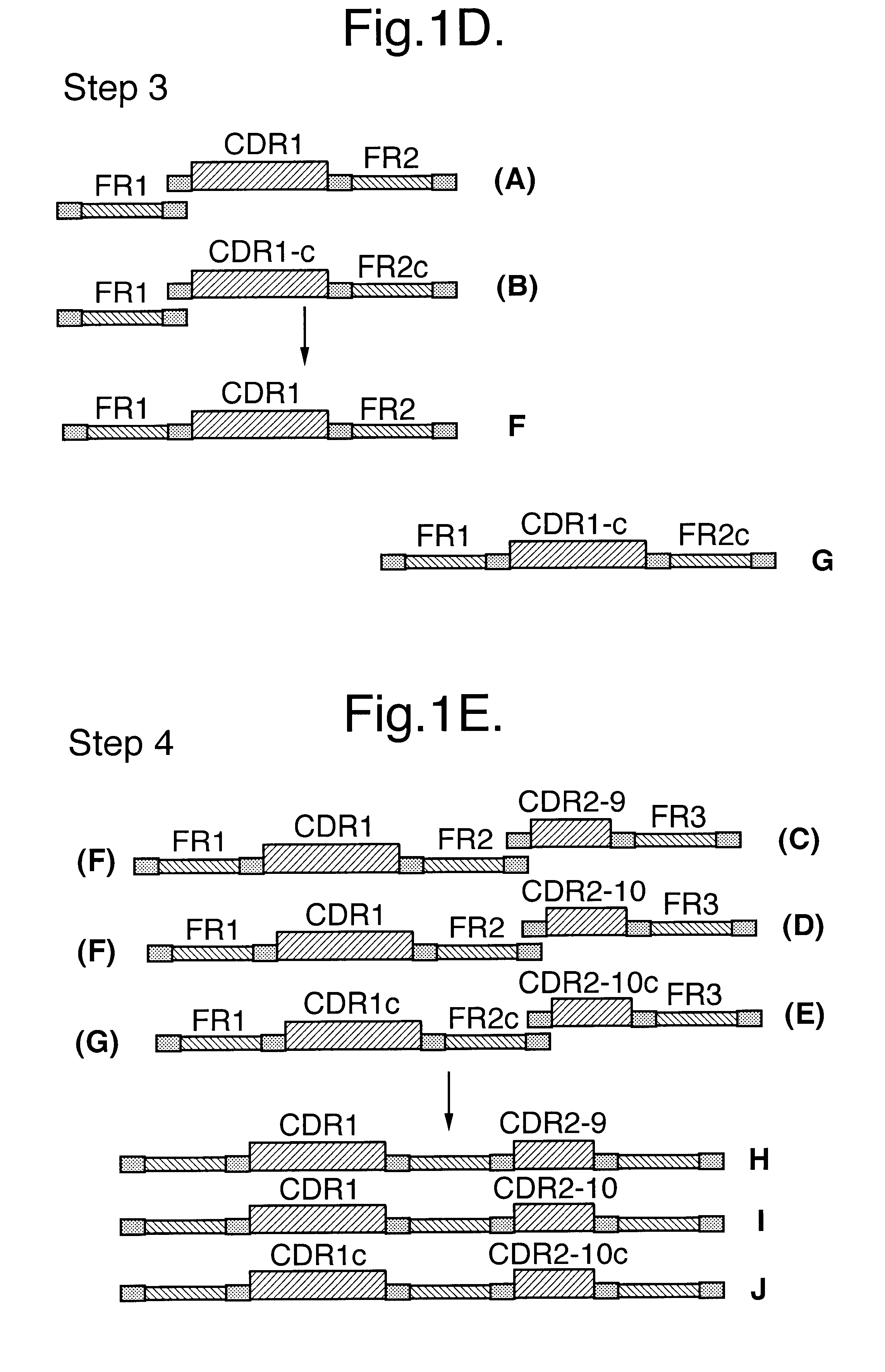Method for producing antibody fragments
a technology of antibody fragments and fragments, which is applied in the field of monoclonal antibodies, can solve the problems of limited complexity, technique that cannot overcome the problems previously discussed, and difficult focused approach to altering the binding affinity of these binding domains
- Summary
- Abstract
- Description
- Claims
- Application Information
AI Technical Summary
Problems solved by technology
Method used
Image
Examples
example 2
Construction of the Synthetic VHH Library
Building on sequence data obtained from 200 individual clones randomly selected from the naive library `anchor regions` in the framework sequences, immediately flanking the CDR regions were identified. These anchor regions were selected based on their high degree of conserved residues and the ability of primers based on these sequences to amplify most if not all of the approx. 7.8.times.10.sup.6 framework regions present in the naive library.
These anchor regions are used to amplify the framework regions individually yielding 5 different types / classes of fragments (F1 / F2 / F2c / F3 / F4). The sequences of these primers are listed in Table 1.
2.1 PCR Considerations
All PCRs for amplification of the framework building blocks and assembly of the full length VHH genes were carried out using conditions and enzymes as described in Jesperson et al (1997). The conditions chosen utilised a mixture of Taq and Pfu (2 units and 1 unit, respectively in a 100 .mu.l...
example 3
Selection of VHH Fragments with Binding Affinity
3.1 Panning of the Library using Solid Phase Immobilised Antigens
Antigens:
Five `antigens` were used to screen the synthetic library. These were Lactate Oxidase (LOX), Starch Branching Enzyme II (SBE II), Classical VHH antibody, a mix of Polyphenols, and Haem conjugated to Bovine Serum Albumin. Panning of phages displaying VHHs was carried out as described below.
Panning and Phage Rescue
Aliquots of phage (1 ml; .about.10.sup.13 phage particles resuspended in 2% Marvel [plus 2% OVA or BSA]) from the large scale phage rescue (see above) were incubated overnight with the relevant sensitised panning tubes (Nunc Maxisorb Immunosorb). Unbound phage were removed by washing the tube 20 times with PBS-T followed by 20 washes with PBS. The bound phages were eluted by adding 1 mL elution buffer (0.1M HCL / glycine pH 2.2 / mg / mL BSA). The elution mixture was neutralised with 60 .mu.L 2M Tris, and the eluted phages were added to 9 mL log-phase E. coli X...
example 4
Identification of Individual HC-V Fragments with Binding Activity
Individual bacterial colonies were picked (48 from pans 2 and 3, for all antigens) using sterile toothpicks and added to the wells of 96-well microtitre plates (Sterilin) each containing 100 .mu.l of 2TY, 1% (w / v) glucose and ampicillin (100 mg / ml). After allowing the cultures to grow o / n at 37.degree. C., 20 .mu.l aliquots from each well of these `masterplates` were added to the wells of fresh microtitre plates each containing 200 .mu.l of 2TY, 1% glucose, 100 mg / ml ampicillin, 10.sup.9 M13K07 helper phage. Infection at 37.degree. C. for 2.5 h was followed by pelleting the cells and resuspending the infected cells in 200 .mu.l of 2TY containing ampicillin (100 mg / ml) and kanamycin (25 mg / ml). Following o / n incubation at 37.degree. C., the phage-containing supernatants (100 .mu.l) were added to the wells of Steril-in microtitre plates containing 100 .mu.l / well of the appropriate blocking buffer (same buffer used as dur...
PUM
| Property | Measurement | Unit |
|---|---|---|
| Fraction | aaaaa | aaaaa |
| Fraction | aaaaa | aaaaa |
| Fraction | aaaaa | aaaaa |
Abstract
Description
Claims
Application Information
 Login to View More
Login to View More - R&D
- Intellectual Property
- Life Sciences
- Materials
- Tech Scout
- Unparalleled Data Quality
- Higher Quality Content
- 60% Fewer Hallucinations
Browse by: Latest US Patents, China's latest patents, Technical Efficacy Thesaurus, Application Domain, Technology Topic, Popular Technical Reports.
© 2025 PatSnap. All rights reserved.Legal|Privacy policy|Modern Slavery Act Transparency Statement|Sitemap|About US| Contact US: help@patsnap.com



